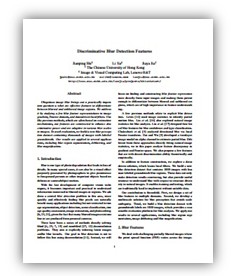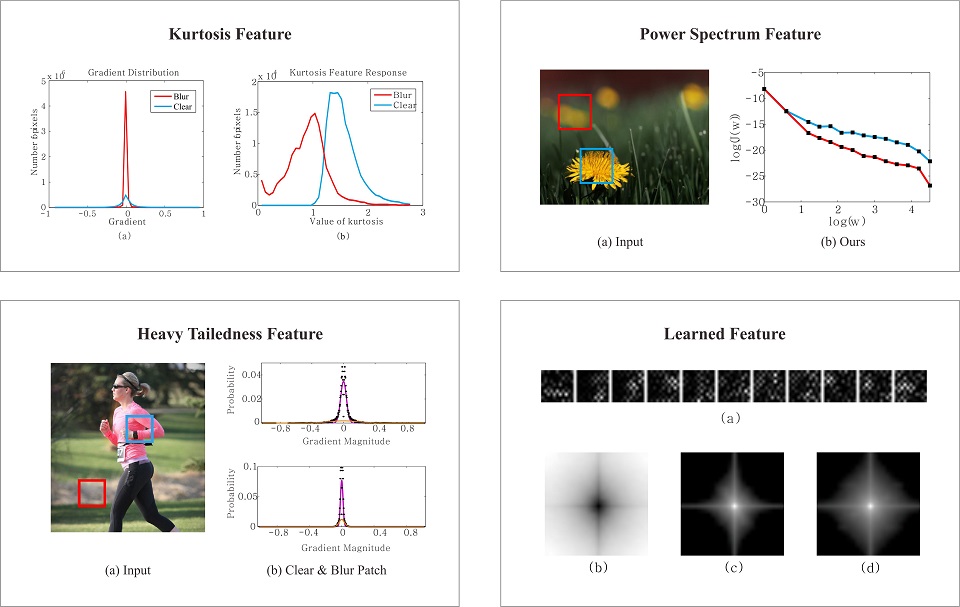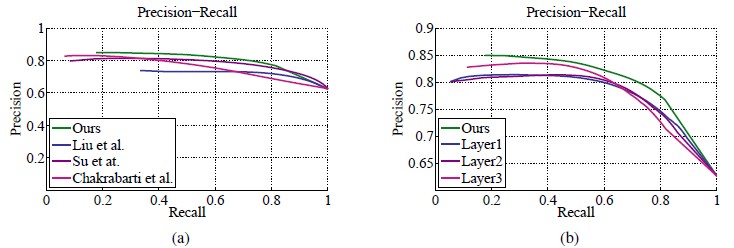
Jianping Shi, Li Xu, Jiaya Jia
IEEE Conference on Computer Vision and Pattern Recognition (CVPR), 2014
Jianping Shi1 Li Xu2 Jiaya Jia1
The Chinese Univeristy of Hong Kong1 Image & Visual Computing Lab, Lenovo R&T2

Our blur detection dataset contains 1000 images with human labeled ground-truth blur regions for image blur analysis.
Abstract
Ubiquitous image blur brings out a practically important question -- what are effective features to differentiate between blurred and unblurred image regions. We address it by studying a few blur feature representations in image gradient, Fourier domain, and data-driven local filters. Unlike previous methods, which are often based on restoration mechanisms, our features are constructed to enhance discriminative power and are adaptive to varying blur scales in images. To avail evaluation, we build a new blur perception dataset containing thousands of images with labeled ground-truth. Our results are applied to several applications, including blur region segmentation, deblurring, and blur magnification.
Blur Detection Feature

This figure illustrates the four features presented in our paper. Kurtosis and heavy tailedness feature measure the gradient distinction. Power spectrum feature focuses on frequency domain. The learned feature is a new direction based on large number of training data.
Results

All results are available here.
Quantitative Comparison

Quantitative comparison. (a) Precision-recall curves for different methods. (b) Precision-recall curves between our single-resolution and multi-scale results. All results are available in our dataset page.
Downloads
 |
"Discriminative Blur Detection Features" Jianping Shi, Li Xu, Jiaya Jia IEEE Conference on Computer Vision and Pattern Recognition (CVPR), 2014 |